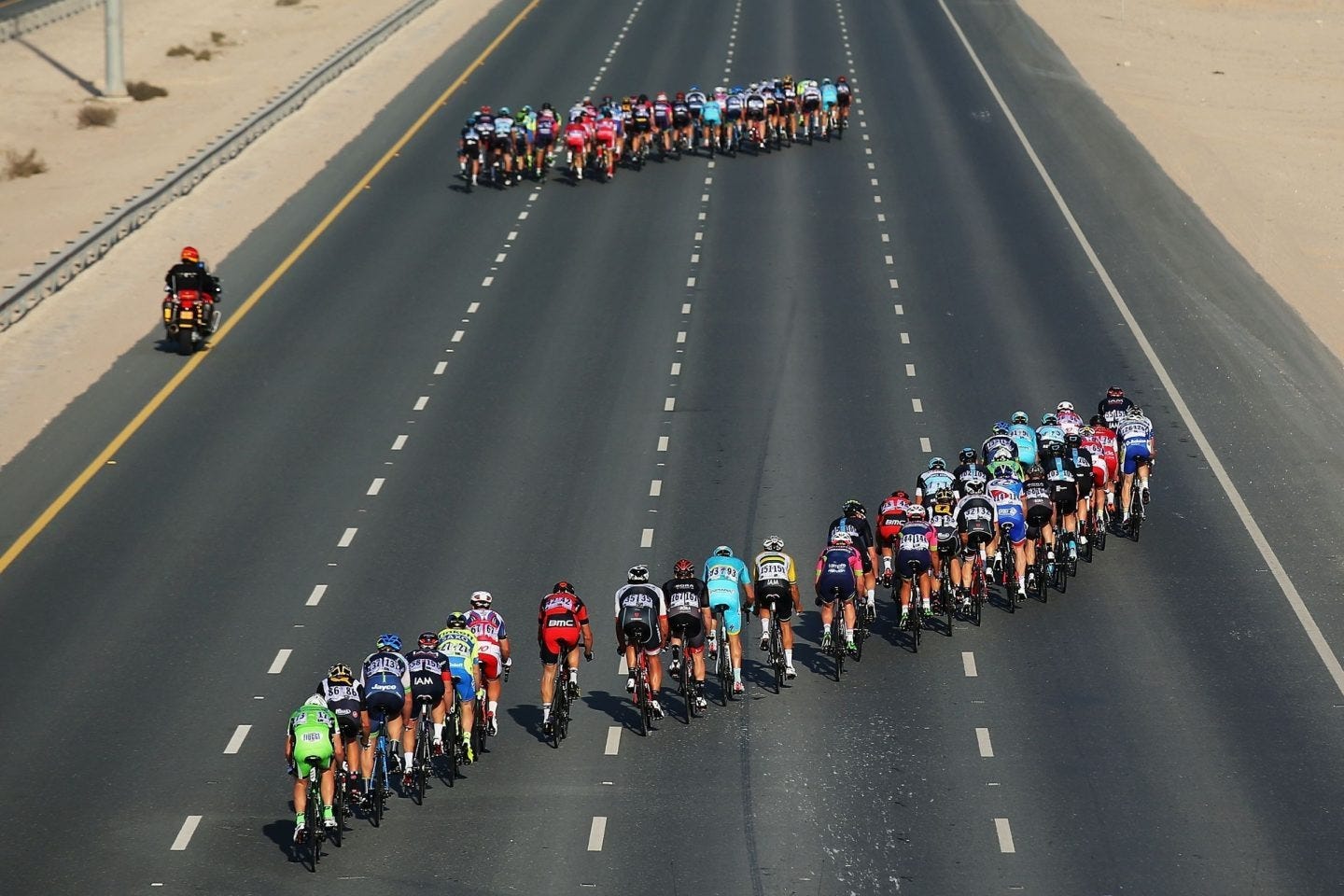I listened recently to an interview with the author of a book on how to live a happy life. No surprise to many: it’s about relationships (not money).
Long-lasting relationships. Marriage. Fast friendship. But also engagement with strangers.
The author recounted a study in which participants were asked either to keep to themselves on a train ride, or to speak with strangers. As a frequent flier who very much dons the blinders when I settle into my seat — open computer, focused gaze, a momentary nod and smile to my neighbor — I’ll have to force myself to abide by the study’s conclusion: talking to strangers makes for a more pleasant trip.
So connections lead to happiness. Meanwhile, we know from history that when confronted with a crisis, humans (often) form bonds: common enemy and all that. So allow me to share my own fulfillment recommendation: Ride bikes. Competitively.
Stay with me here: In a bike race you’re testing your fitness and mettle against two types of rival: fellow riders, and the environment (and maybe a third, your demons, but we’ll leave that aside for now). The environment is the course — the hills, the twists, the surface — and the conditions: wind, cold, heat, maybe precipitation (though I’ve all but sworn off of riding in the rain, and I’m not a fatbiker — yet). Even as racers seek to distance themselves from other riders, they’re forming connections and conjuring common stories around the shared challenges posed by that environment.
Wind is the real divider/uniter: A loner breakaway is unlikely for even a race’s strongest rider; on a windy course, solo heroics typically become Sisyphean. So racers form alliances, developing shared advantage by trading turns at the front, while others borrow shelter from the wind. In a crosswind, racers form “echelons,” which are remarkable and even quite beautiful to look at:

This all occurred to me just after finishing last weekend’s Paskenta Century. It’s an unsanctioned, grassroots ride that happens every Super Bowl Sunday; there’s no finishing arch, no midride feeds, no numbers to pin on, but this ride is a legit race, with about 150 competitors spending 100 miles searching for advantage over their rivals.
Until we turned into crosswinds, that is. Then we unspokenly formed pacts: If you’ll let me tuck in beside you, I’ll shoulder the burden later. Effort after effort, we fanned across the road, developing ad hoc teams that morphed every time the road shifted.
The alliances forced by those crosswinds are limited and short-lived: We are racing, after all; this ain’t a rolling support group. The road is about ten riders wide, so the group’s size is capped. And when a rider gets tired, or loses focus and allows a gap to form, no one’s coming to their rescue.
But crosswinds — like rain, or snow, or climbs or the potholes we collectively dodged — are also fodder for post-race chumminess, even life-enriching relationship building: I may not want to close my computer and turn my attention to the stranger in seat 8B, but I’ll spend an hour recounting a race’s slings and arrows with a rival I’d never met before we found ourselves gritting our teeth, side by side, in a merciless crosswind, an hour earlier.
Make no mistake: that new-found buddy is also a rival, repeatedly trying to break me, sealing me out of his draft (and repeatedly holding fast to my wheel as I attacked over every small rise). But post-race was all fist bumps and bro-hugs, all self-deprecating congratulating and respect.
Because here’s the other reason bike racing at my level makes for human connection: We (mostly) don’t take ourselves too seriously. There are exceptions, of course; “roadies” aren’t known for their altruism. But when you’re not earning money; when you’re taking collective risk; when you’re facing shared challenges; and when you’re dressed head to toe in matching Lycra, it’s rather difficult not to chuckle at yourself, and to appreciate that other guy, your new friend, the one who just beat you to the finish line, but also offered shelter from the wind.




